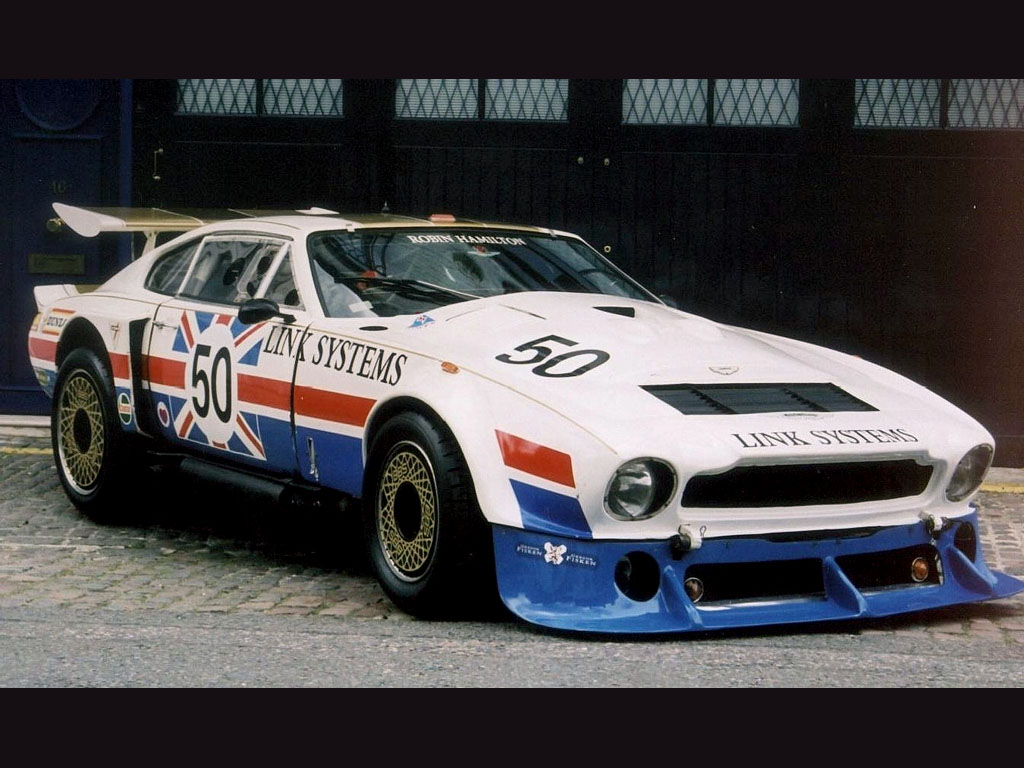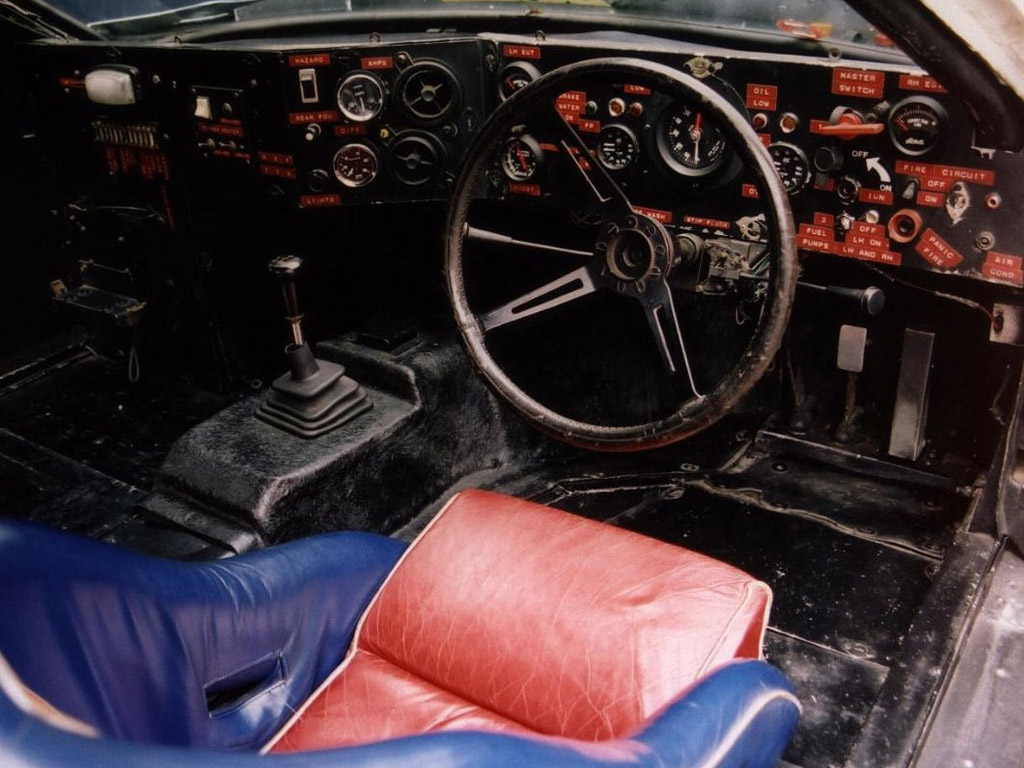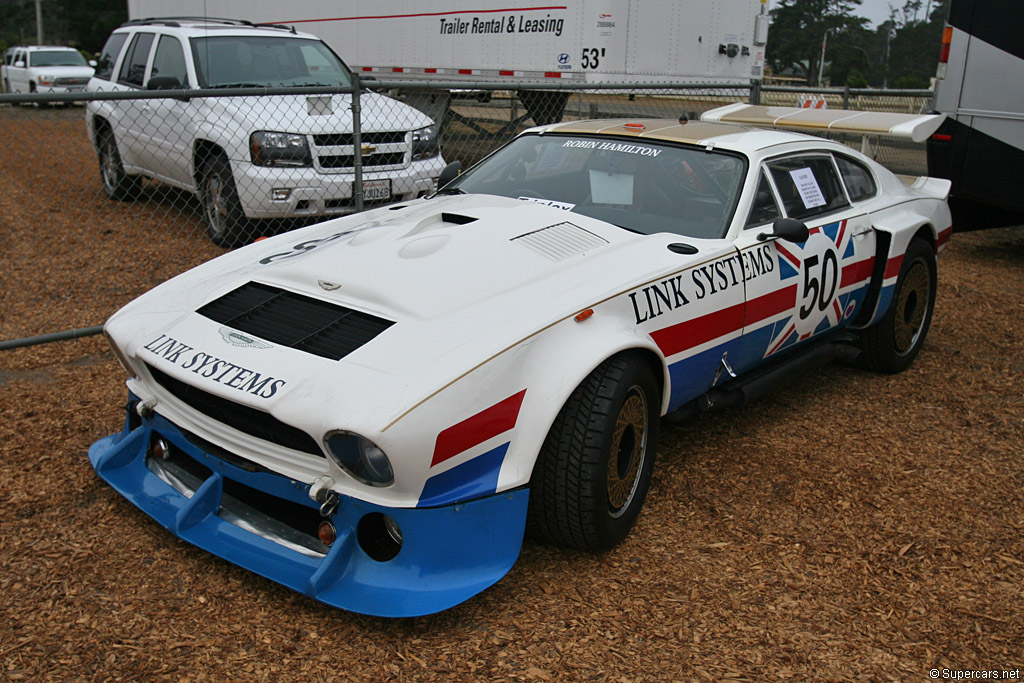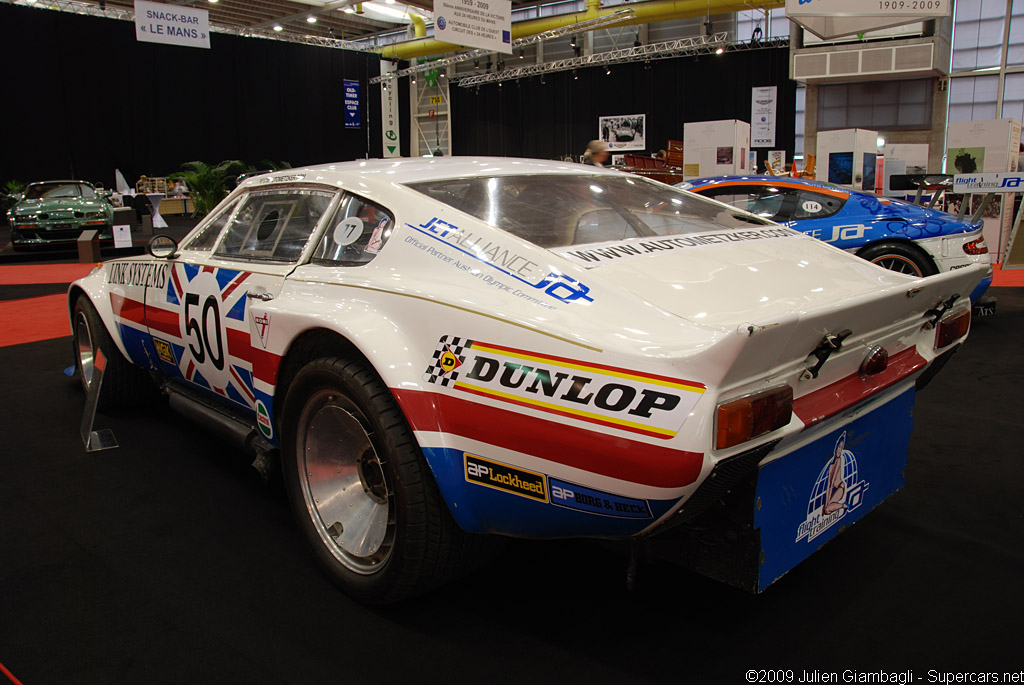1970 Aston Martin DBS V8 GTP Muncher
This Aston Martin DBS V8 occupies a special place in the history of the marque at Le Mans. Prepared by Robin Hamilton and co-driven by him, David Preece and Mike Salmon, this car finished 17th overall and 3rd in the GTP class at the 1977 Le Mans 24-Hour endurance race, an event few critics believed the team would finish.
Staffordshire based Aston Martin specialist Hamilton had conceived the idea of racing one of the V8-engined cars in 1974, campaigning this example, chassis number 10038, in lightly modified form in club events. The first major alterations were made to conform to Group 4 regulations and bring the car into line with the then current production AM V8 by fitting the latter’s two-headlamp front end. With Le Mans the eventual target, the car was further developed to incorporate modified cylinder heads, revised camshafts, side-draft Weber carburettors and a race exhaust system, while the running gear was up-rated with stiffer springing, bigger brakes, wider wheels and slick tyres. In this form 10038 raced in AMOC events throughout 1975 before gaining a quartet of dragster-style downdraft Webers for 1976.
Failure to drum up sufficient sponsorship meant that the 1976 Le Mans race was missed, which if nothing else allowed the team time for extra development, including a dynamometer session at the Newport Pagnell factory in November/December of that year. The factory also paid for wind tunnel testing at MIRA, a highly beneficial exercise that resulted in low-drag, increased downforce bodywork that would later appear on the production Vantage model. Sponsorship by SAS, a security equipment company, financed the 1977 Le Mans effort, prior to which the car raced at the Silverstone Six Hours on 15th May supported by donations from individual AMOC members. By this time the V8 engine was developing 520bhp, an output calculated to produce speeds of a magnitude requiring a rear wing to counter lift, though the presence of this un-homologated modification meant that the Aston was now in Group 5 alongside the turbocharged Porsches. The chassis too, had undergone considerable modification, prompting the team to give it the number RHAM 001 (Robin Hamilton Aston Martin 001). In the Silverstone race, 55 minutes were lost to repairs but the exercise proved useful in revealing that the differential needed additional cooling.
For Le Mans, third driver Mike Salmon was recruited to join Hamilton and David Preece, who had driven the car at Silverstone. A Le Mans veteran, Salmon had driven the last Aston to race at the Sarthe, Peter Sutcliffe’s Project 214, in 1964. A request to move to the GTP category, where opposition was deemed less strong, having been granted by the organisers, the Aston qualified slowest in class after recording an impressive 188mph along the Mulsanne straight during practice. In the race itself, Hamilton drove the opening stint followed by Preece and then Salmon, the Aston picking up numerous places before, at a routine stop at 10.19pm, cracks were discovered in the front brake discs. They were replaced in a stop lasting 31 minutes, but a lack of further spares meant that conservation was the order of the day for the remainder of the race. The only other serious problem encountered was a split differential oil tank that needed regular patching and topping up. Running steadily to the flag, the Aston Martin crossed the finish line after 2,210.78 miles of racing with Robin Hamilton, who had driven longest of the three drivers, at the wheel. It gave Hamilton immense satisfaction, not only because he had achieved a lifelong ambition by driving an Aston Martin across the Le Mans finishing line, but also because by so doing he had confounded the pundits who claimed that the heavyweight DBS V8 was totally unsuitable for racing.
Hamilton continued to develop 10038, which was not used in 1978 but next appeared at the Silverstone Six Hours in May 1979, considerably lightened and re-modeled with a lower roof line, while beneath the bonnet was a twin-turbocharged version of the Aston V8 engine producing 650bhp in race trim. Driven by Preece and Le Mans-winner Derek Bell, the car finished in midfield having been hampered by brake and oil breathing problems. At Le Mans, the V8 proved capable of lapping several seconds quicker than in 1977, but in the race itself retired with a melted piston during the third hour. The car’s next competitive outing, at Silverstone in 1980, ended in early retirement. As a footnote to its racing career, 10038 set a new World Land Speed Record for towing a caravan later that year, when Robin Hamilton towed an Alpha 14 van to 125mph (mean) having seen 152mph on the clock exiting the timed quarter-mile!
10038 will be on sale at Bonhams’ Aston Martin Auction held on the May 13th, 2006 at Works Service, Newport Pagnell
Story by Bonhams
In Detail
| submitted by | Richard Owen |
| engine | V8 |
| power | 387.8 kw / 520 bhp |
| f brake size | mm / in |
| r brake size | mm / in |
| gear ratios | :1 |













